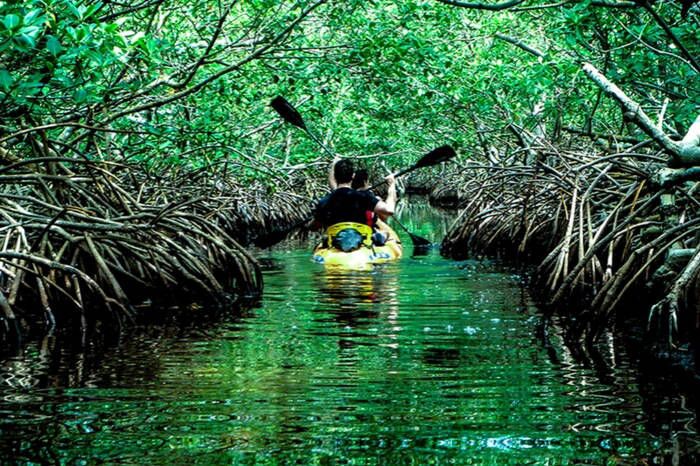



Cheap Baratang Tour Packages, Best Travel Agent in Baratang, Local Travel Agent in Baratang, TravelHed The Andaman and Nicobar Islands are the summits of a submarine mountain range lying on the great tectonic suture zone that extends from the eastern Himalayas to the Arakan along the Myanmar border and finally to Sumatra and lesser Sundaes. This archipelago consists of a group of 572 islands, islets and rock outcrops, but there are a total of 352 important islands comprising the main chain of Andaman and Nicobar, Ritches Archipelago and the out laying volcanic islands of Narcondam and Barren. The islands are spread over an area of 8,249 sq.km, of which 6,408 sq. km of area is occupied by the Andaman group and 1,841 sq.km by the Nicobar groups of Islands. The Andaman group consists of 324 islands of which 24 are inhabited while the Nicobar group includes 28 islands of which 12 are inhabited. Undulating topography and intervening valleys characterize the physiography of this Archiepelago. There are several rain-fed streams, which dry up during summer. All the major islands support a luxuriant growth of evergreen, semi evergreen, moist deciduous and littoral forests from the water edge to the mountain top depending on the topography and nature of the soil. For administrative purposes, the Islands are divided into two districts, namely Andaman and Nicobar. There are a total of 204 revenue villages of which 197 are in the Andaman District. The Andaman and Nicobar is having a good economic turnover through Tourism Industry because of its rich natural scenic beauty and natural resources. At the same time these islands are facing problems such as population growth, commercial development etc and in turn facing acute power shortage. The ever increasing energy needs of the islands will have to be taken into account in the long term Master Plan even at this state. Dependence should be entirely on the local resources - biomass and other resources of the islands as well as the vast renewable resources of the ocean and atmosphere. In this respect, it is possible that the technology that could be developed and perfected for the islands could be a path-breaker for the national program also. Bio-mass production could be undertaken on an accelerated scale under highly favorable conditions. Solar, tidal and wind resources could be of great importance. Resources from the ocean pose new challenges to our scientist and technologists. When agricultural production, industrial development and economic exploitation of oceanic resources go hand in hand, the energy problem is likely to be a constraint if timely steps are not taken in that direction




